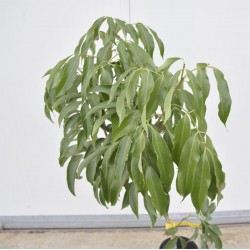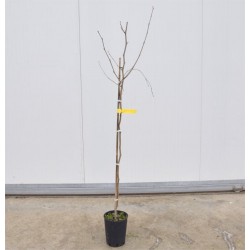copy of Tarot Orange Tree
Generality of the Tarot Orange Tree:
Tarot oranges are a particular variety of citrus fruits grown in some areas of Sicily: with their sweet and sour taste, they are perfect to be consumed naturally or to prepare excellent juices. In addition to being very tasty, tarocco oranges are also rich in vitamins, antioxidants and minerals. What favors this process, and which makes it unique, are the temperature variations due to the appearance of snow on Etna.As known, oranges are an excellent source of vitamin C and A. Vitamin C has multiple properties capable of providing various benefits to our body, allows our body a better absorption of iron and also has anti anemic properties.
- Height 150 / 160cm
On-line Sale Of the Tarot Orange Tree, available in the following sizes:
- Height 150 / 160cm
Generality of the Tarot Orange Tree:
Tarot Orange Tree represents one of the blood oranges appreciated in Italy and abroad.Their fruit is large and of a precious variety and with a strawberry aroma.The skin is thin and smooth, of medium or thin thickness, orange yellow and reddened on more than half of the surface. Seedless, very resistant to transport, it is grown mainly in the province of Catania, where the reason for the true peculiarity of this variety lies: the pigmentation, which depends very much on the degree of ripeness of the citrus fruit. What favors this process, and which makes it unique, are the temperature changes due to the appearance of snow on Etna.As known, oranges are an excellent source of vitamin C and A. Vitamin C has multiple properties capable of providing various benefits to our body, allows our body a better absorption of iron and also has anti anemic properties. To better take advantage of the benefits related to vitamin C it would be better not to completely eliminate the white part that is under the peel. Thanks to its high content of vitamin C, 100 grams of orange are enough to satisfy the daily requirement of vitamin C of an adult. Furthermore, this vitamin promotes the formation of collagen, the molecule that makes the skin toned and elastic.
Cultivation and Care of the Tarot Orange Tree:
The orange tree is a plant that loves temperate-warm climates and not excessively rainy in the autumn and winter seasons. The ideal temperature range is the one that goes from about 13 to 30 ° C and is very afraid of temperatures that drop below 3 ° C. Long lasting strong winds can cause various damage to plants because they can cause the drying of leaves and young shoots as well as the breaking of the thinnest branches. As in the case of all citrus fruits, even orange plants have as their ideal soil a loose or medium-textured soil, well draining, deep, fertile and properly fertilized. The ideal soil pH should range between 6.5 and 7.5. Clayey soils, calcareous ones and those characterized by a high alkalinity do not lend themselves to the cultivation of orange. The planting of the plant should be carried out in the spring period, between the end of March and that of May (depending on the area), when the risk of harmful late frosts is now averted. Pruning of orange trees can take place a couple of times a year; once in summer (late June-early July) and once in winter, during vegetative rest. We will proceed by lightening the foliage of the plant by eliminating the broken branches, the dry ones, those that have already bloomed and those bent downwards. It is important to remember to always remove the so-called suckers if they come from the base of the largest branches; if, on the other hand, they are located in the peripheral area of the canopy, simply tick them off. The pruning of the orange (and this also applies in principle to other types of citrus fruits) must not be too drastic, to ensure that a correct balance is maintained between the production of the fruit and the vegetation. More aggressive pruning is carried out only in the case of parasitic attacks or if the plant has become excessively tall. In the autumn and winter, orange plants do not have particular needs for irrigation; things change in the hottest periods when it is necessary to proceed with regular watering (but never exceeding). The oranges are harvested at different times depending on the variety; in any case, it is concentrated in the period from mid-October to the end of May. It is advisable to harvest on a non-rainy day and late in the morning. In order not to damage the oranges, it is advisable to remove them from the twigs using special scissors. Once harvested, the oranges should be dried and placed in wooden or plastic crates which will be stored in a cool and dry place. After harvesting, the orange plant will be fertilized using an organic-mineral fertilizer. A final nod to adversity; those that can affect orange plants are different; we remember the black aphid and the green aphid, the wonder mite, the rusty mite, the green bug, various types of cochineal, the fetola, the white fly, the citrus cotonello, the red spider, the thrips etc.


























